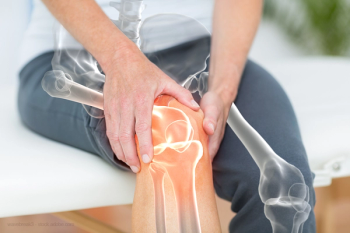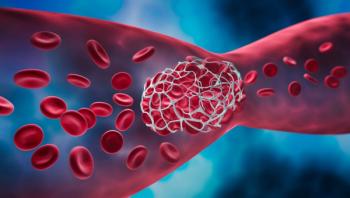
Early Factor VIII Prophylaxis Is Best for Long-Term Joint Health
The researchers concluded that delayed prophylaxis start with intermediate dose intensity of factor VIII prevents bleeds, but at a cost of more joint damaged and reduced health-related quality of life.
For patients with hemophilia A, starting factor VIII prophylaxis therapy early in life leads to less joint damage (arthropathy) and a better health-related quality of life (HRQoL), investigators in Norway and Sweden have concluded following a retrospective analysis of patient data.
They also found that there is room for adjustment in the intensity of therapeutic regimen, so dosages can be individualized while still achieving good outcomes.
The
The study included patients with a variety of mutation types — null mutations that prevent factor VIII from being produced and non-null mutations that restrict the amount of factor VIII that can be produced. Results in terms of joint health were fairly consistent, although further study may be needed to confirm this as a reliable pattern, Arvanitakis and his fellow researchers wrote.
Two cohorts of patients with severe hemophilia A were enrolled at clinics in Malmö, Sweden, and Oslo, Norway. Investigators sought to elucidate how starting factor VIII prophylaxis at different ages affects rates of bleeding, arthropathy, factor replacement consumption, and HRQoL.
The median age at prophylaxis start was 1.25 years among the 15 patients in the primary group and 31.5 years among the 22 patients in the secondary group.
The researchers observed significant differences between the two groups in hemophilia joint health scores (4 vs 20), respectively, with the higher number representing worse joint health. They noted a median annualized bleeding rate of 0 for both groups.
“Delayed prophylaxis start with intermediate dose intensity prevents bleeds, but at a cost of more arthropathy and reduced HRQoL,” they wrote.
More patients in the secondary group experienced problems with anxiety and depression, conducting everyday activities, self-care, and mobility.
Arvanitakis wrote that “non-null FVIII (factor VIII) genotype may allow lower factor consumption” while achieving hemophilia joint health scores and bleeding rates comparable with patients with null genotypes.
Patients in the secondary group had significantly lower factor VIII consumption (median 2,737 IU/kg/year vs 3,883 IU/kg/year), but most of these patients were treated at the Oslo clinic, and the authors theorized a difference in treatment practices at these two centers could have been the reason.
“Accordingly, the intensity of prophylaxis may be successfully individualized and lowered in adults without significantly jeopardizing the bleeding phenotype,” the report said.
However, a subset of patients who commenced prophylaxis between ages three and nine years of age did have relatively high median FVIII consumption (3,872 IU/kg/year), leading investigators to theorize that “high treatment intensity cannot compensate for a delayed prophylaxis start regarding the risk of arthropathy, but the very low number of patients (enrolled in the study) makes this finding uncertain.”
They concluded, “Our data underline the importance of starting primary prophylaxis to avoid progressive joint damage.”
Newsletter
Get the latest industry news, event updates, and more from Managed healthcare Executive.






















































